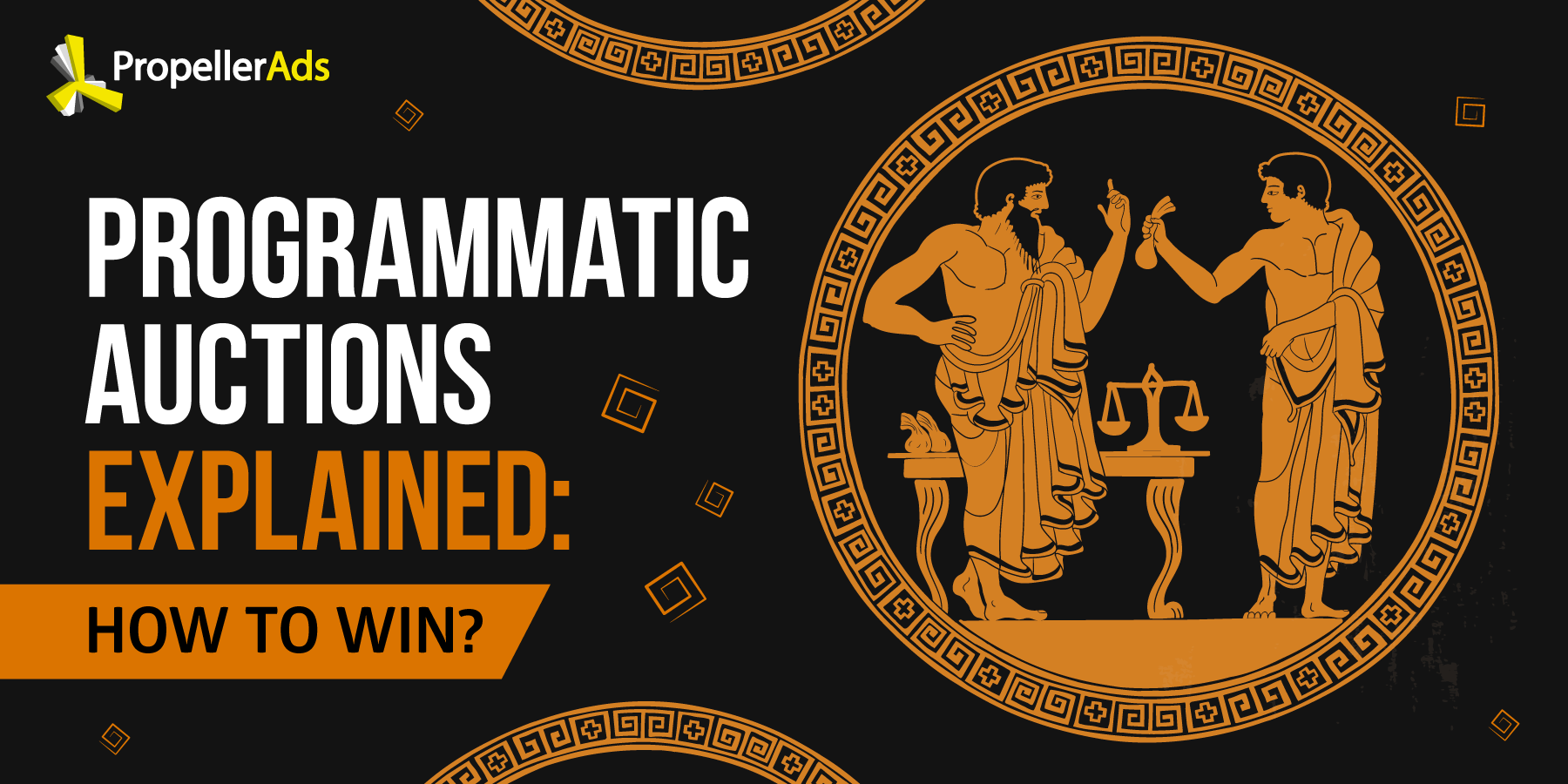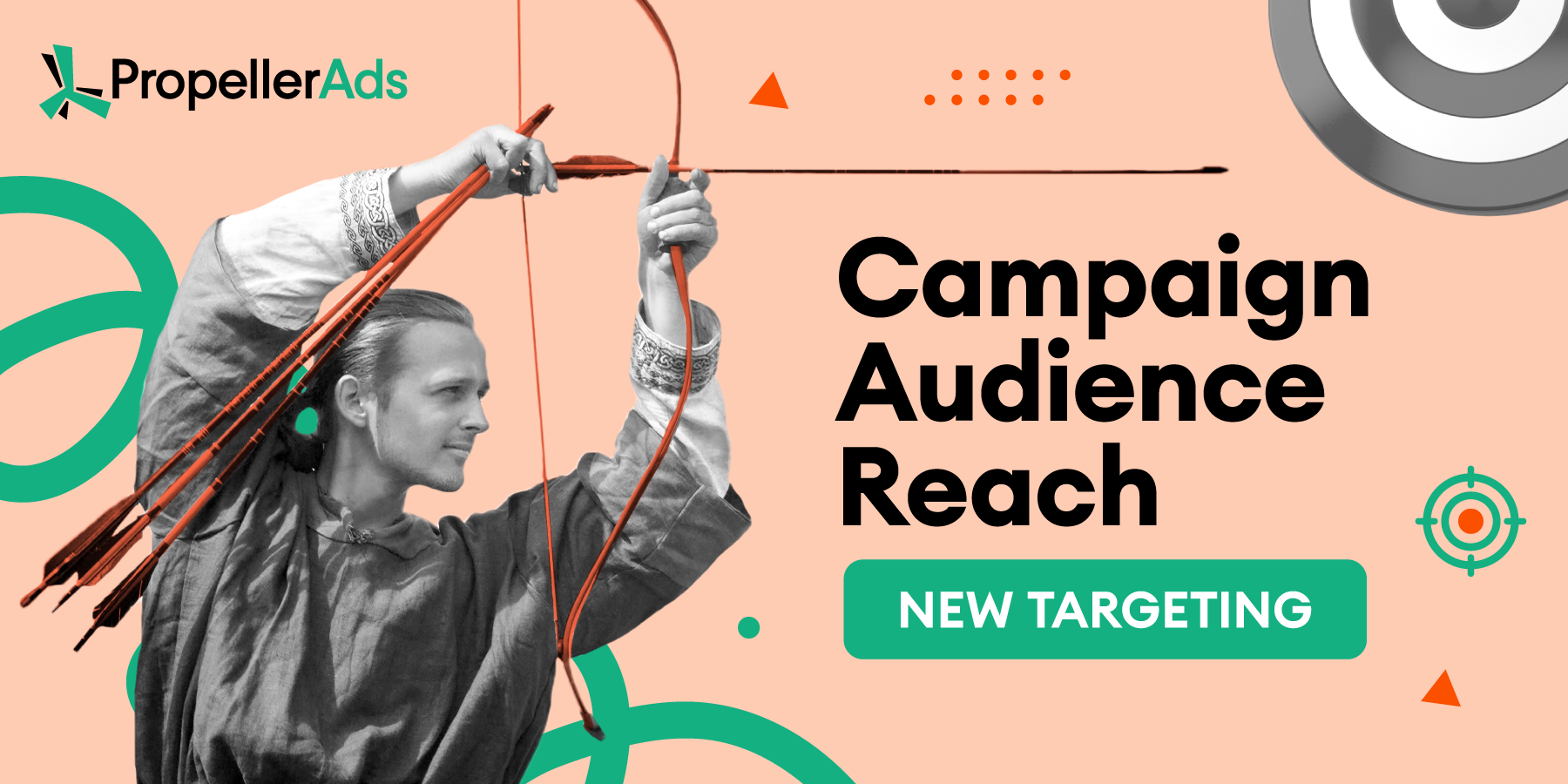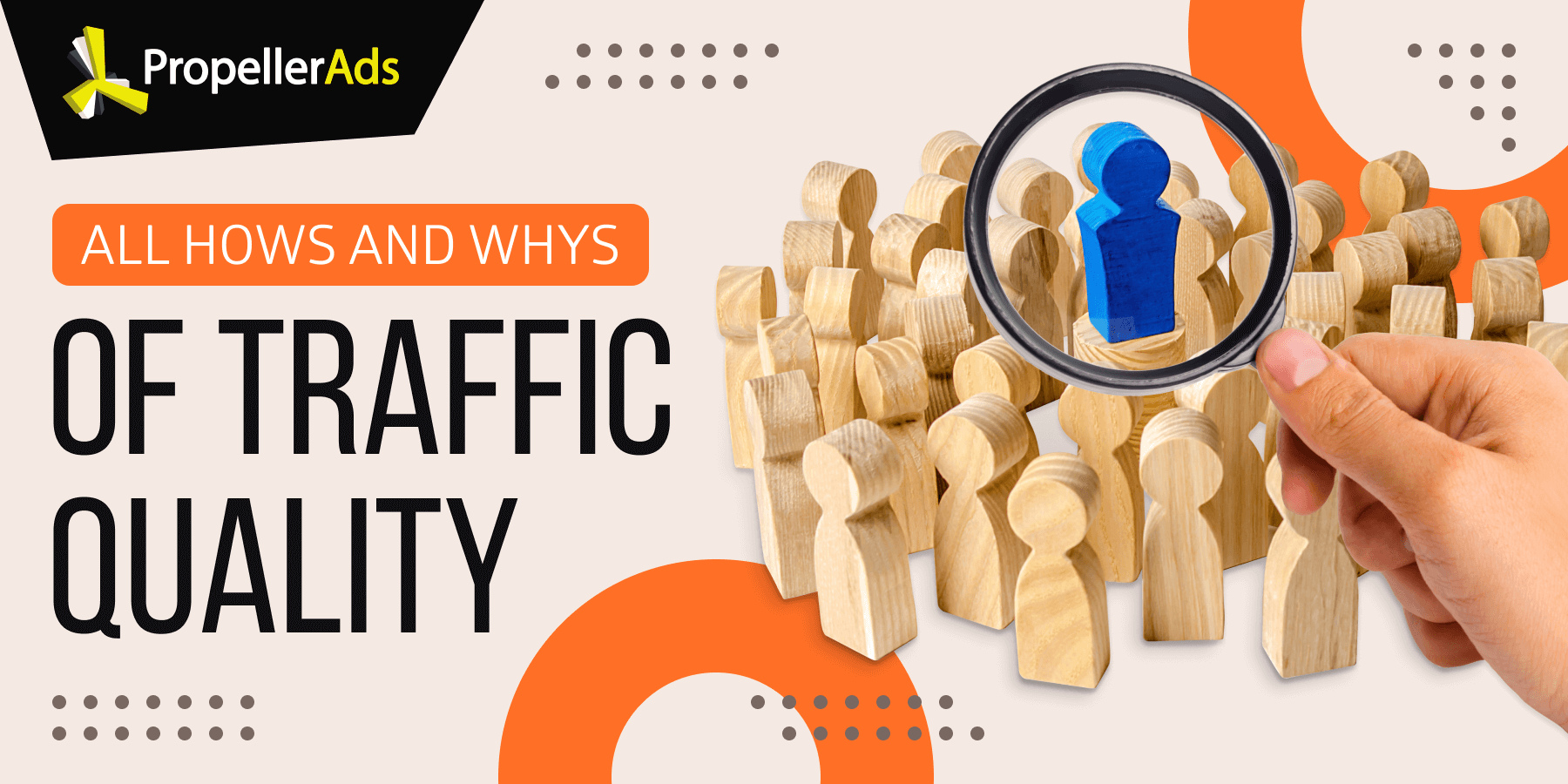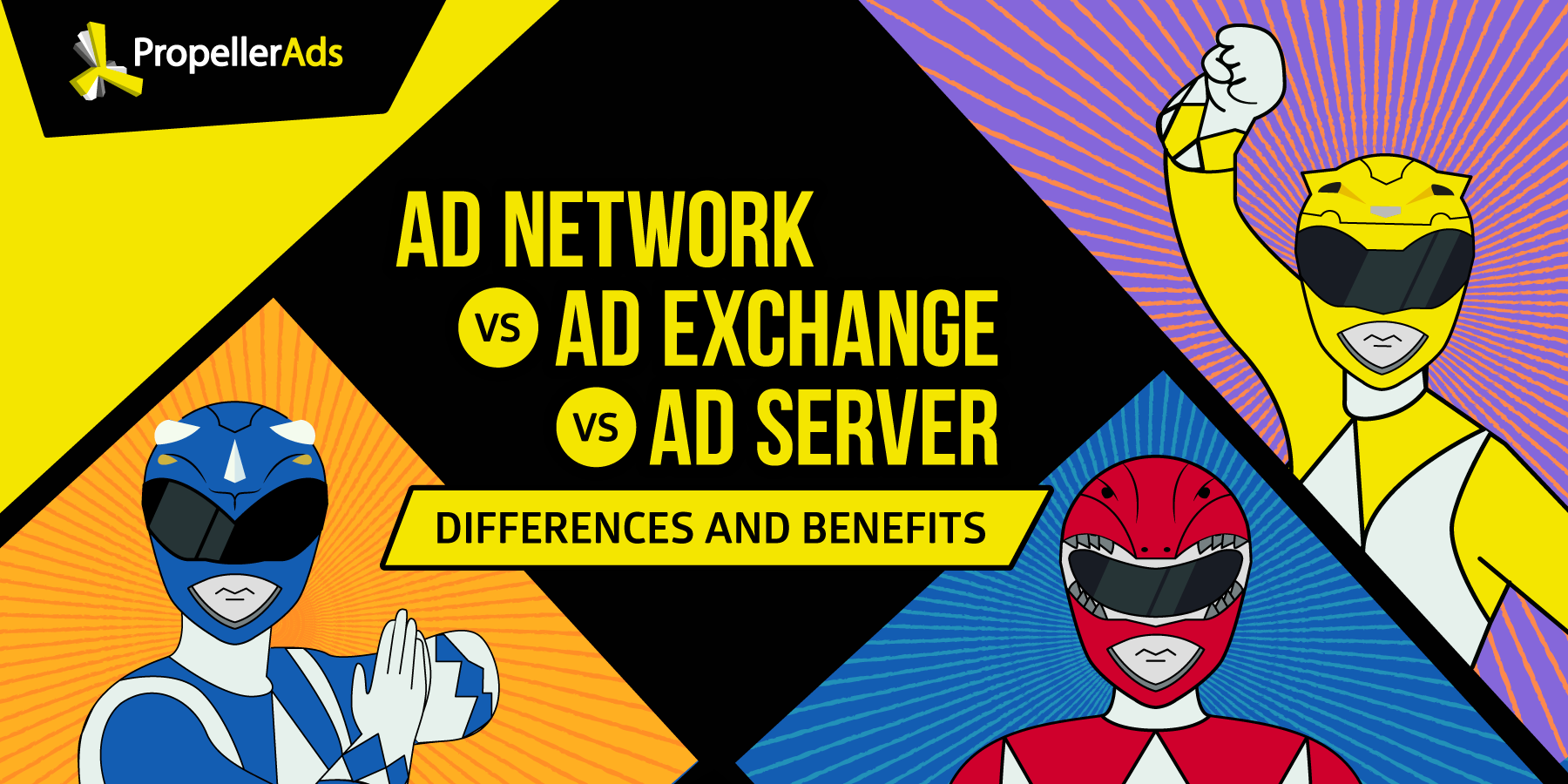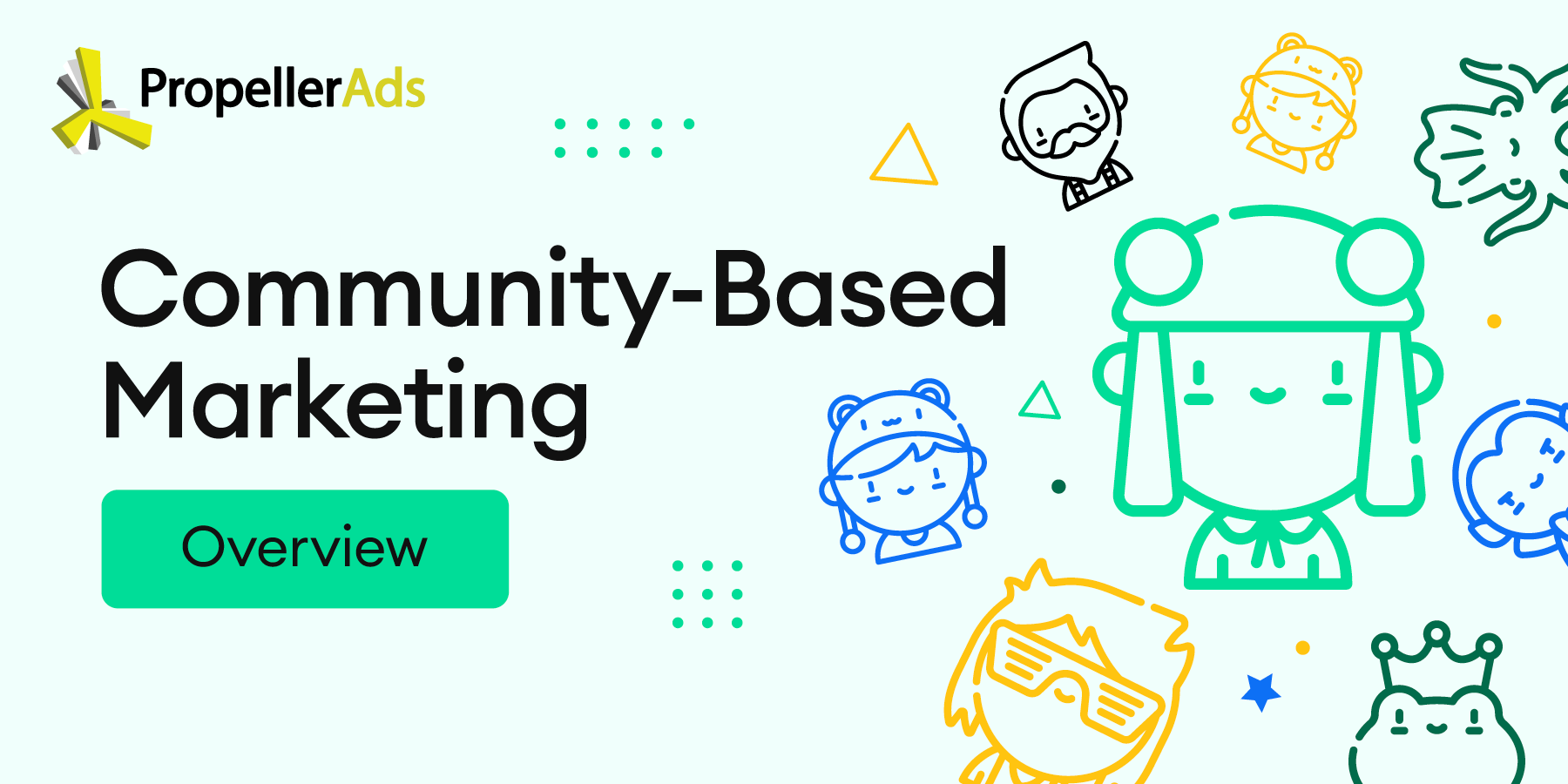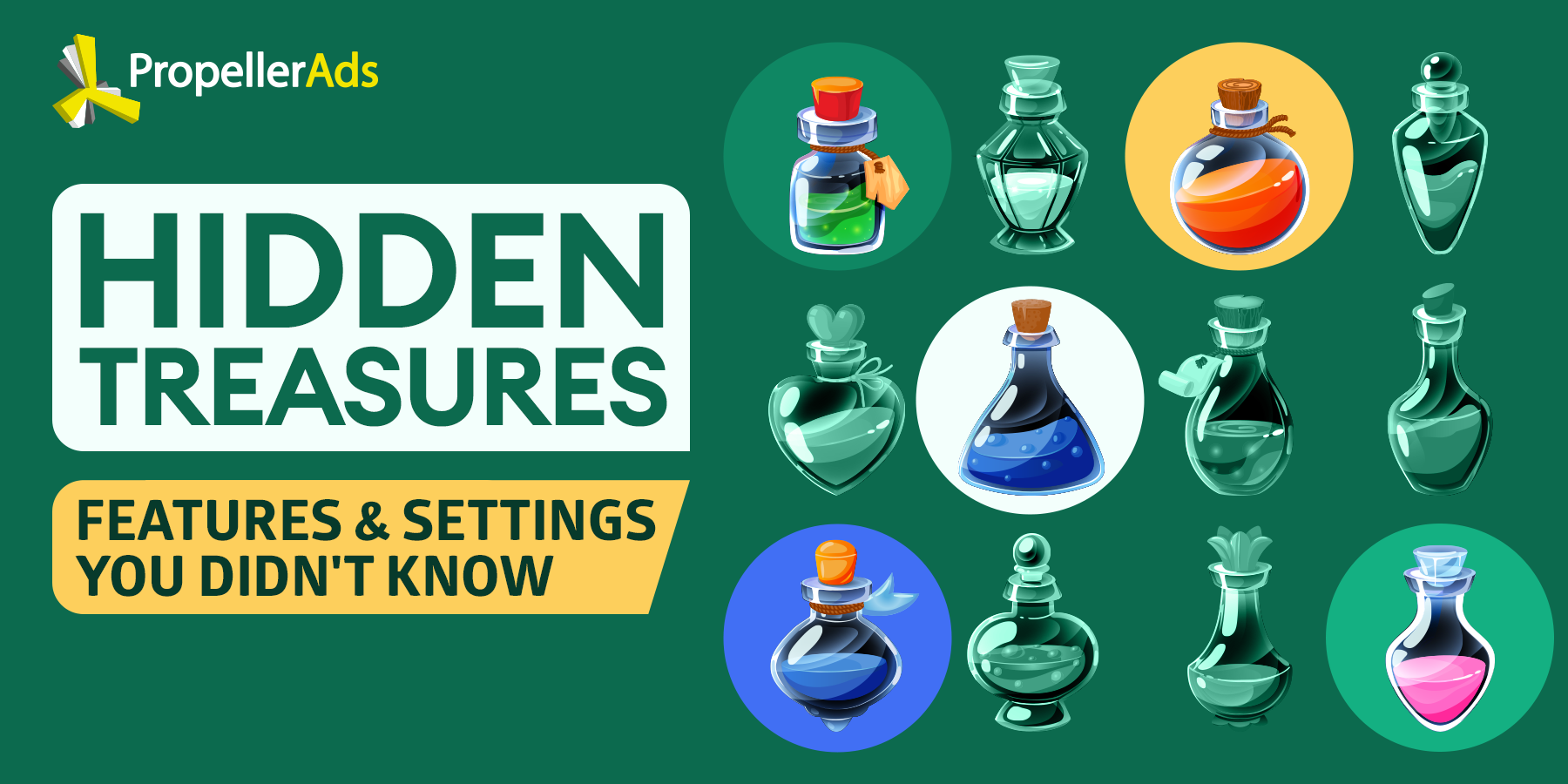The Guide to Programmatic Display Advertising: Ins and Outs
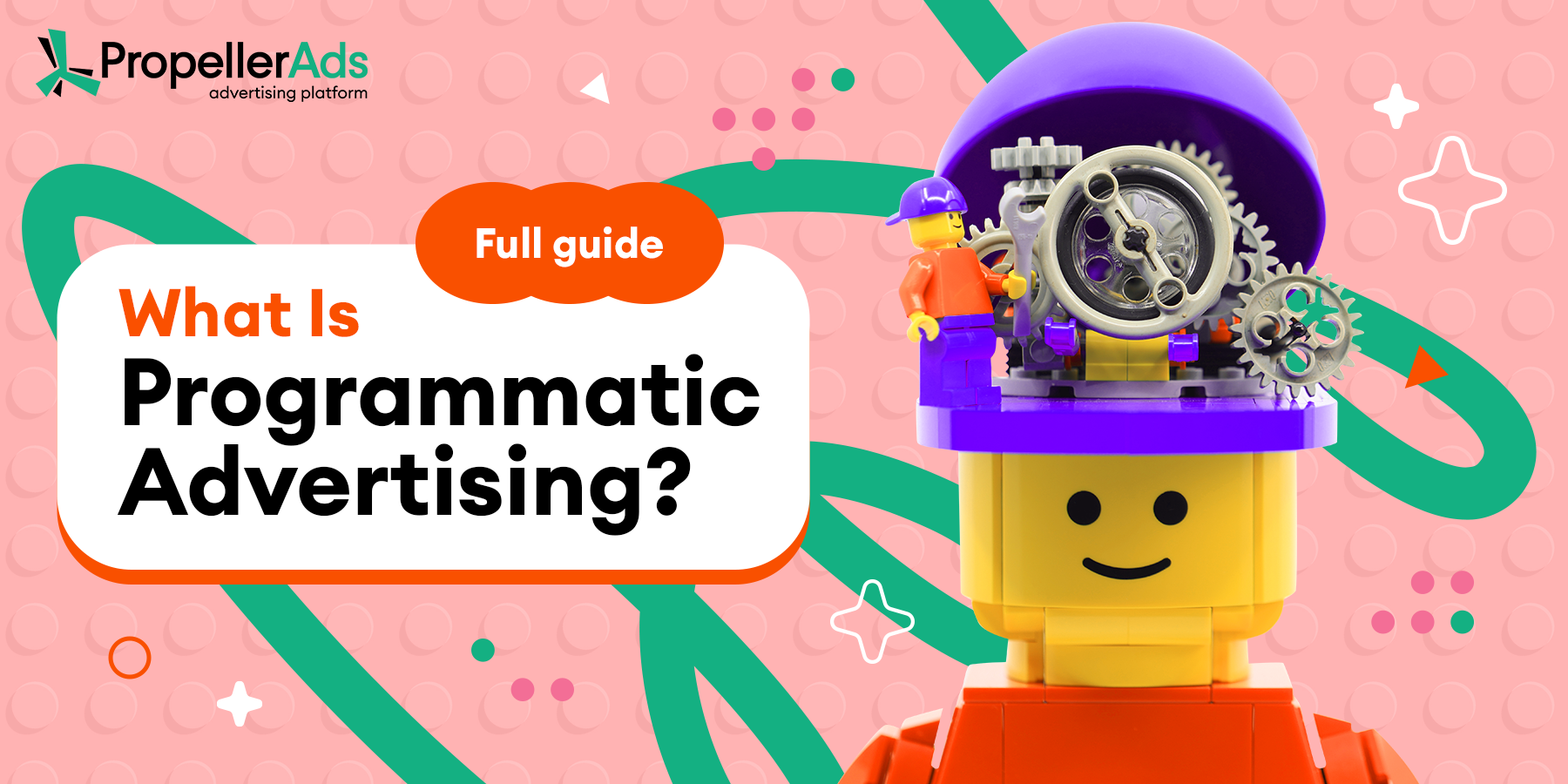
This post is also available in:
ES
When you start googling “programmatic display advertising”, chances are you will stumble at numerous articles that may contain contradictory definitions. There are so many nuances and myths around it that a lot of newcomers get confused and surrender.
No worries! As always, the PropellerAds Content Team is here to fill the gaps in your knowledge and explain whatever you feel unconfident about. So let’s start with…
What is programmatic display advertising in simple terms?
To put it maximally simply and accurately, programmatic advertising is an automated way of purchasing targeted ads in real time.
The main and most appealing characteristic of programmatic is a highly precise audience segmentation based on customers’ behavior and preferences. Usually, data processed by machine-learning algorithms is used for this purpose, and numerous parameters are considered.
Basically, it means that you can buy particular audiences, only those you find relevant to your offer.
Two core reasons to have programmatic advertising in your omnichannel kit
Simply because it solves major performance issues. With programmatic, you may rely on audience targeting, retargeting, and optimizing your campaigns. A couple of words about that:
Targeting + retargeting
Here is what Serge Abramov, our media buyer, says:
“Programmatic advertising allows audience segmentation by relying on third-party user data. This doesn’t include any personal information, but rather shopping habits, location, and device. The parameters are pretty broad, but there are plenty of them, and they are enough for segmentation. Data-based targeting, which can be followed by retargeting efforts, is what programmatic can offer.”
Real-time decision-making
Since programmatic advertising allows you to deal with real-time data, it ensures conditions for prompt analysis and optimization. Knowing how these or that zones (placements) or messages perform, you can adjust your campaigns and avoid overspending.
Types of programmatic display advertising
Basically, there are four most-common of programmatic:
- RTB (real-time bidding) – RTB implies a real-time auction where advertisers place bids to buy ad impressions.
- Private marketplace – also, publishers may offer their inventory to a limited circle of advertisers and sell it on private marketplaces to control the process.
- Preferred deals – another “closed” way of selling inventory for publishers, which implies special deals with chosen advertisers. Preferred deals are arranged before publishers head to private marketplaces and open markets.
- Programmatic direct – means that advertisers and publishers make face-to-face or B2B programmatic advertising deals.
Minuses and benefits of programmatic advertising
Pros:
- Speedy campaign launch and real-time optimization due to high automation of the process.
- Some programmatic platforms encourage you to buy premium traffic via open bidding, which may decrease the price. Reason – direct deals usually have more coefficients to mind, which can trigger higher expenses.
- Programmatic usually entails numerous optimization settings and parameters, including viewability and/or conversions. With all that settings at hand, you can make precise conclusions about your campaign performance and make sharp optimization decisions.
- You are free to choose either expensive topnotch traffic or affordable remnant – depending on your goals and budget.
Cons:
- Even though programmatic platforms usually have numerous high-tech AI programmatic advertising tools, they might be available for large customers, agencies and brands initially. Solo advertisers may need to invest some time and budget into their ad campaigns with a certain platform to get access to a full toolkit.
- Prepare money for testing – yup, good results with programmatic are only possible after you gain some understanding and perform tests.
- Successful work with programmatic advertising may take more time than successful work with contextual advertising.
Ecosystem: how does programmatic advertising work?
Okay, now we know the most important benefits and reasons to use programmatic advertising. They are pretty simple, which is hard to say about its ecosystem, where numerous unclear abbreviations and terms are. However, a closer look will prove that there is nothing too complicated here:
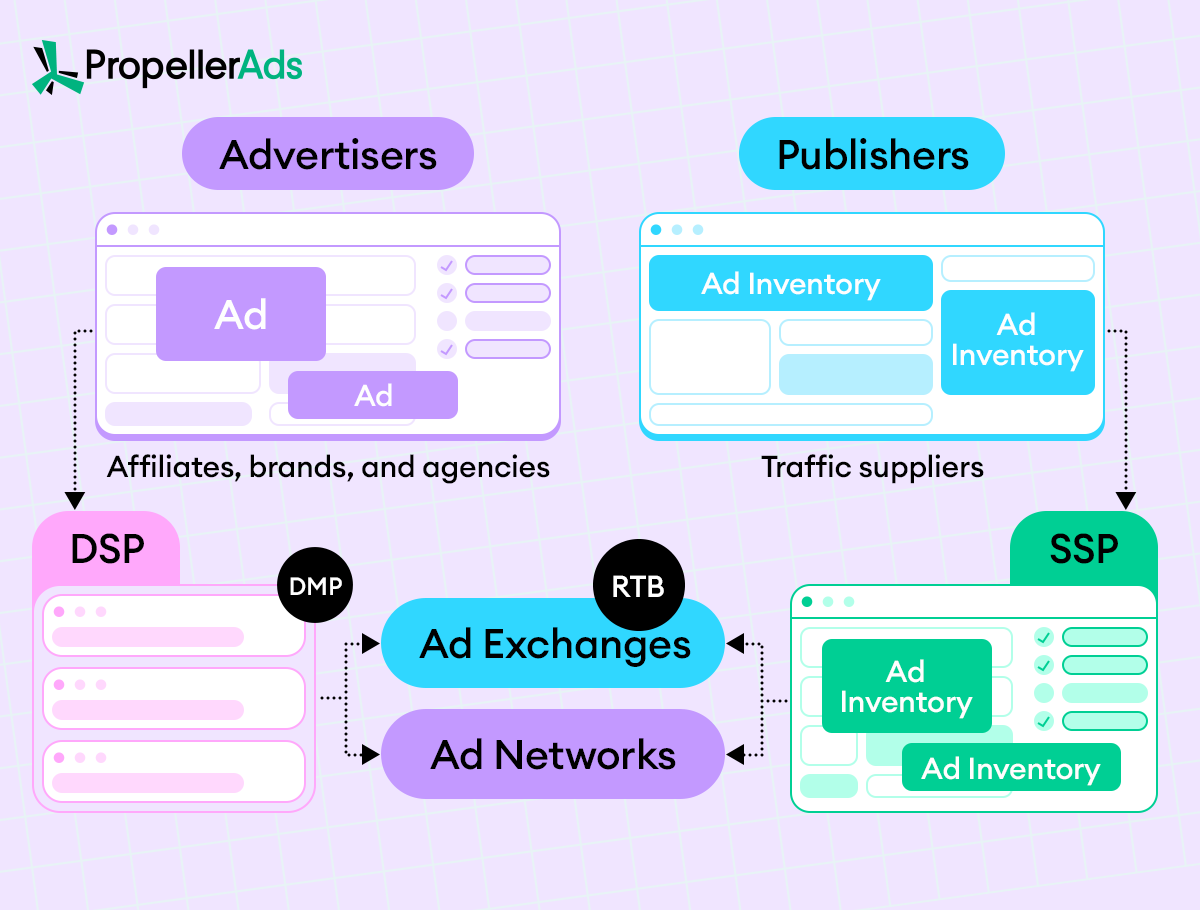
Still have questions? Let’s discuss each part of the ecosystem presented:
- DSP or demand-side platform – this side of programmatic advertising represents the entity that buys traffic (this is why it is called “demand”) and delivers ad space from a number of suppliers. It’s also a system, an interface, where creatives are uploaded and targeting settings are specified. DSPs have algorithms that make bids and ensure campaign optimization.
DSPs have tools to target users by GEO, browser, as well as their preferences, like previous online behavior.
Examples: Google Marketing Platform, Amazon DSP, Jampp
And at PropellerAds, we usually sell Onclick, Push, and In-page push (IPP) traffic at ad exchanges.
- SSP or supply-side platform – this side is a system that offers accumulated traffic from numerous websites and sticks to DSP. In simple words, SSP is a huge collection of traffic sources, which are united in a single flow and connected to DSP to sell traffic.
Examples: Google Ad Manager, Criterio
- DMP (data management platform) – DMP serves to collect non-personal users data and allocate them into audience segments, regarding their online behavior patterns. The data processed by DMP is used by DSP to “understand” which traffic it should purchase.
Examples: Adobe Audience Manager, Google Marketing Platform, SAS Data Management
Here is what Serge Abramov has to add:
“DMP can help you collect users who visit your website. In turn, you may classify them into custom audience. For example, these might be users interested in goods for cats or those fond of cars. In some sense, it’s similar to social media segmentation – these platforms also have their DSP, DMP, and SSP for campaign launch, data processing, and traffic distribution. The only social media peculiarity here is that you stay limited by the only platform (Facebook or Instagram)”.
Small FAQ to conclude
- How much money do you need to start a programmatic campaign?
There is no fixed sum to start with and everything depends on your goals and network you choose. For example, $300 might be enough to buy some traffic at the start. The truth is that ad platforms rarely provide all of their tools for free, so the most advanced ones might require some additional fee (usually, monthly).
PropellerAds recommends starting with a $500 budget to cover all of your initial expenses.
- Are Facebook ads programmatic?
Actually, yes, Facebook Ads are programmatic campaigns. Facebook Ads utilize an in-house self-serve ad platform, where you can set your campaign settings, targeting, etc. And it is programmatic.
- So, programmatic advertising is a deal you can make via ad exchanges?
Exactly. Ad exchanges serve to unite publishers, brands, agencies, advertisers and networks to sell and buy traffic/ad impressions automatically.
- Can you give programmatic advertising examples?
Sure. YouTube delivers personalized ads based on users’ previous behavior and basic demographics (result – boosted ROI and user engagement). This largest video platform uses programmatic to deliver relevant ads.
- Are all display ads programmatic?
Basically, these are two different forms of advertising, but they can overlap and display ads can be either programmatic or placed manually.
- What is the difference between digital advertising and programmatic display advertising?
To put it briefly, digital advertising aims to reach as many relevant users as possible, while programmatic is all about precise targeting and audience segmentation on the basis of real-time data. So programmatic is precise and dynamic when it comes to engagement.
Hopefully, now you know everything you wanted to know about programmatic advertising.
And don’t forget that in the complicated world of traffic purchase, you have PropellerAds. We are your advertising network with high-quality and relevant traffic, machine-learning tools for optimizing, and high-tech bidding models for the best result!
If you have questions or want to share your thoughts – welcome to our Telegram chat!
